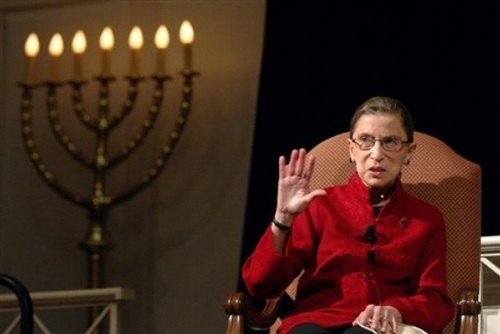1 View
Chrysler Zombie Watch 7: What's Bothering Ruthie?
by
Steve Jakubowski
(IC: employee)
Published: June 9th, 2009
Share
The brilliant lawyer, author, and ex-blogger, Bill Patry (now senior copyright counsel at Google), wrote on his Patry Copyright Blog back in 2005 about the greatest Biblical scholar of all time, Rabbi Shlomo Yitzhak (whom everyone affectionately calls “ Rashi“).Bill wrote:Rashi is used as a learning device for children not because he is simple (he isn’t) but because of the unusual nature of his commentary. His commentary consists of very terse conclusions, but without the questions that prompted the conclusions. Children are left with the task of asking “What’s Bothering Rashi?”The “What’s Bothering Rashi?” approach to learning text is useful in analyzing statutes because it teaches one to ask the why of things, rather than as we almost always do, just read the literal words divorced from what the law would be like in their absence.Bill’s post came to mind in thinking about “What’s Bothering Ruthie?” that would prompt her to call a halt to a sale that remarkably worked its way from bankruptcy filing to cert. review in less time than it takes the average person to buy a used Town & Country. Here are a few ideas:
- Maybe she doesn’t like the lawyers across the street telling her ( as reported here by SCOTUS Blog) that “no court, including the Supreme Court, has the authority to hear a challenge by Indiana benefit plans to the role the U.S. Treasury played in the Chrysler rescue.” Tell that to Justice Marshall!
- Or maybe, like her predecessors during the Depression in the Schechter Poultry Corp. v. US case, she’s wondering whether ( as argued here by Ralph Nader) Congress abdicated the essential legislative functions with which it is vested by letting the Executive Branch alone structure and implement the deal.
- As noted in my Part I analysis, however, I doubt she’s losing sleep over whether the sale is a sub rosa plan or whether the absolute priority rule was violated.
Steve Jakubowski
More by Steve Jakubowski
Published June 9th, 2009 7:06 AM
Latest Car Reviews
Read moreLatest Product Reviews
Read moreRecent Comments
- SCE to AUX All that lift makes for an easy rollover of your $70k truck.
- SCE to AUX My son cross-shopped the RAV4 and Model Y, then bought the Y. To their surprise, they hated the RAV4.
- SCE to AUX I'm already driving the cheap EV (19 Ioniq EV).$30k MSRP in late 2018, $23k after subsidy at lease (no tax hassle)$549/year insurance$40 in electricity to drive 1000 miles/month66k miles, no range lossAffordable 16" tiresVirtually no maintenance expensesHyundai (for example) has dramatically cut prices on their EVs, so you can get a 361-mile Ioniq 6 in the high 30s right now.But ask me if I'd go to the Subaru brand if one was affordable, and the answer is no.
- David Murilee Martin, These Toyota Vans were absolute garbage. As the labor even basic service cost 400% as much as servicing a VW Vanagon or American minivan. A skilled Toyota tech would take about 2.5 hours just to change the air cleaner. Also they also broke often, as they overheated and warped the engine and boiled the automatic transmission...
- Marcr My wife and I mostly work from home (or use public transit), the kid is grown, and we no longer do road trips of more than 150 miles or so. Our one car mostly gets used for local errands and the occasional airport pickup. The first non-Tesla, non-Mini, non-Fiat, non-Kia/Hyundai, non-GM (I do have my biases) small fun-to-drive hatchback EV with 200+ mile range, instrument display behind the wheel where it belongs and actual knobs for oft-used functions for under $35K will get our money. What we really want is a proper 21st century equivalent of the original Honda Civic. The Volvo EX30 is close and may end up being the compromise choice.


































Comments
Join the conversation
So, what's bothering Ruthie? Absolutely nothing.
Pch101 Would you please start your own blog. It would be well worth reading.